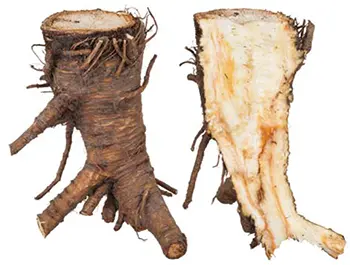
Discovering the Origins
Angelica, belonging to the parsley family, is a tall plant characterized by large umbels of white or greenish flowers. Its stems are candied for consumption, and roots flavor liqueurs. Native to the Northern Hemisphere’s temperate and subarctic regions, including Norway, Lithuania, and Russia, its name derives from the Greek ‘angelos’, meaning ‘messenger’.
Historical Significance and Lore
Legend holds that an angel revealed Angelica to a monk in a dream as a plague remedy, inspiring its name. It’s a key ingredient in Carmelite water, a tonic by Carmelite monks since the 1600s for headaches, relaxation, and protection against poisons and spells. Chinese angelica, or dong quai, holds a long-standing place in Chinese medicine.
Healing Uses
Angelica treats fevers, colds, coughs, and chest congestion as an expectorant. It aids menstruation and relieves bloating and cramps, though it’s not recommended for pregnant women. Its compounds resemble calcium channel blockers, useful in treating high blood pressure, migraines, and Raynaud’s disease.
Magical Uses
This herb offers protection against negative energy and attracts positive forces. Growing angelica in gardens guards homes, while its dried leaves can ward off evil spirits and aid in exorcism. Angelica root is used in potpourri and adding it to bathwater can counter curses and spells.
Personal and Spiritual Growth
Angelica relaxes the mind and sparks imagination, providing strength and balance during tough times. Its essential oil has a revitalizing effect, making it beneficial for overcoming sluggish periods and reconnecting with the inner self.
